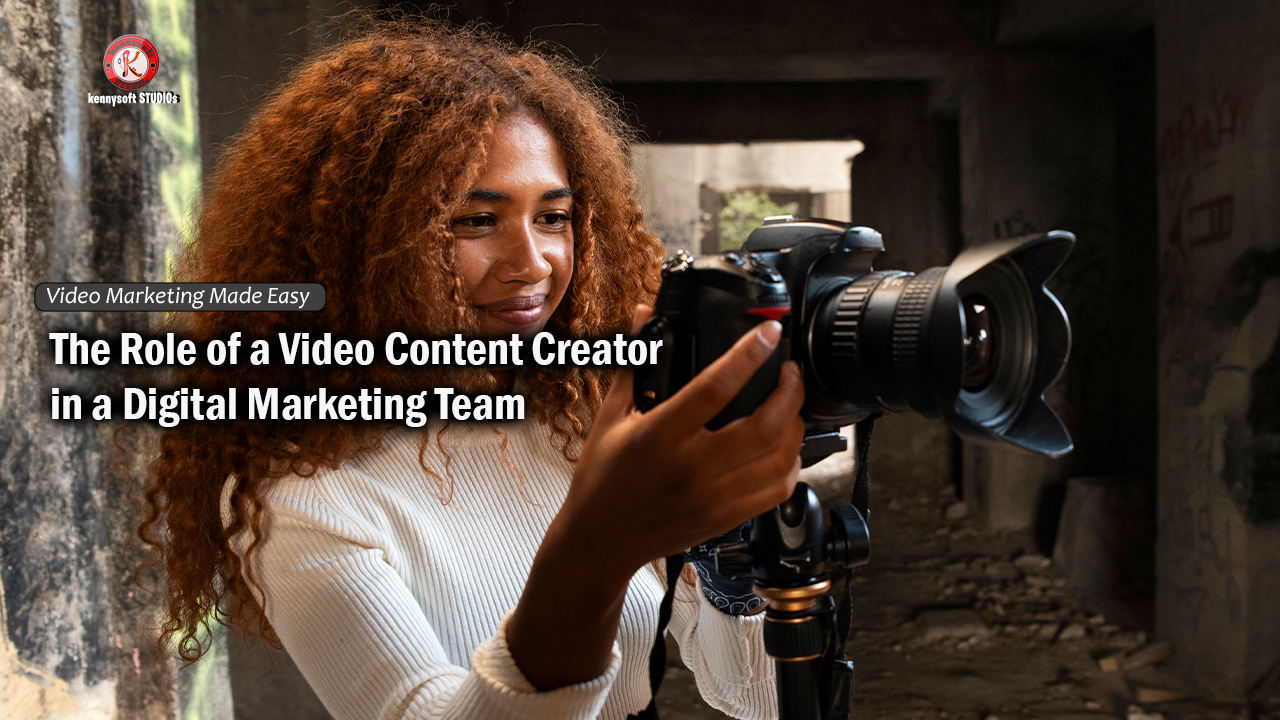For every digital marketing team, a video content creator has a role to play since there is a high demand for high quality video content. Video content has become the cornerstone of digital marketing, dominating platforms like YouTube, Instagram, TikTok, and LinkedIn. From social media platforms to websites and email campaigns, video content is unmatched in grabbing attention and delivering messages effectively.
Whether it’s a product demonstration, a tutorial, or a short-form video for social media, videos captivate audiences in ways that static images or text simply can’t. But what exactly does a video content creator do, and why is their role so essential to the success of a digital marketing team?
In this article, we’ll explore the critical role of a video content creator, the skills they bring, and how they contribute to the success of a digital marketing strategy.
Driving Social Media Engagement
Video content creators play a crucial role in driving social media strategies. Short-form videos, like Instagram Reels, TikTok’s, or YouTube Shorts, are pivotal in increasing reach and engagement.
Responsibilities:
- Creating platform-specific content optimized for TikTok, Instagram, Facebook, and YouTube.
- Staying updated on video trends and leveraging them creatively.
- Incorporating CTAs to encourage likes, shares, and comments.
Impact: Social media videos generate higher engagement rates than text or images, ensuring the brand stays visible and relevant.
Shaping Brand Identity Through Storytelling
A video content creator brings a brand’s story to life visually, ensuring it resonates with its target audience. They use storytelling to forge an emotional connection, which is vital for building trust and loyalty.
Responsibilities:
- Crafting scripts and narratives that align with the brand’s voice and values.
- Creating video content that conveys the company’s mission, culture, and personality.
- Highlighting unique selling points (USPs) through compelling visuals and messaging.
Impact:
Storytelling humanizes a brand, making it relatable and memorable. A well-crafted story can significantly enhance brand awareness and differentiation in competitive markets.
Multi-Platform Mastery
Today’s audiences consume video on multiple platforms, from Instagram Stories to YouTube Shorts. Each platform has unique requirements in terms of video length, format, and style.
A video content creator understands these nuances and tailor his/her content to maximize reach and effectiveness. For example:
- Short, punchy clips work best for TikTok and Instagram Reels.
- In-depth tutorials or webinars are ideal for YouTube or LinkedIn.
- Silent videos with subtitles perform well on Facebook and Twitter.
Impact: Their ability to adapt content for different platforms ensures that the brand’s message reaches the right audience in the right way.
Collaborating Across the Team
A video content creator doesn’t work in isolation. They’re a critical link in the digital marketing chain, collaborating with various team members:
- Social Media Managers: To ensure videos align with posting schedules and platform strategies.
- Copywriters: For creating captions, descriptions, and taglines that complement the videos.
- Designers: To maintain a cohesive visual identity across all brand content.
Impact: This collaboration ensures that video content integrates seamlessly into broader marketing campaigns.
Analyzing Video Performance
A video content creator’s job doesn’t end at production. They analyze the performance of their videos to understand what resonates with the audience and refine future content accordingly.
Performance Metrics:
- View counts and watch time.
- Engagement rates (likes, comments, shares).
- Conversion rates from video CTAs.
- Drop-off rates to determine when viewers stop watching.
Impact: Data-driven insights help improve future video strategies, ensuring the content continually evolves to meet audience preferences.
Innovating with Emerging Trends and Technologies
Digital marketing evolves rapidly, and video creators must stay ahead of the curve to remain effective. They explore new formats, tools, and platforms to keep content fresh and competitive.
Examples:
- Leveraging augmented reality (AR) and virtual reality (VR) in videos.
- Creating interactive video content with clickable elements.
- Exploring AI-driven tools for editing or personalization.
Impact: Innovation keeps the brand at the forefront of digital marketing trends, ensuring it stays relevant to tech-savvy audiences.
Skills of a Successful Video Content Creator
A video content creator wears many hats, requiring a combination of creative, technical, and strategic skills. These skills include;
- Creative Storytelling: Crafting narratives that captivate audiences.
- Technical Proficiency: Expertise in video editing software like Adobe Premiere Pro or Final Cut Pro, and familiarity with cameras and lighting.
- Adaptability: Adjusting content for various platforms and trends.
- Collaboration: Working effectively with marketing and creative teams.
- Analytical Thinking: Using data to measure success and improve strategies.
Conclusion
A video content creator is much more than someone who makes videos but also a storyteller, strategist, and innovator who brings a brand’s vision to life. He is a brand ambassador who bring marketing campaigns to life through compelling visuals. As brands continue to prioritize video in their marketing efforts, the value of this role will only grow.
As the demand for video content continues to grow, investing in skilled video content creators can be a game-changer for any organization looking to thrive in the digital age.
Remember, by investing in video content creation you are investing in your brand’s future. So, if you’re looking to boost your marketing efforts, make sure you have a talented video content creator on your team. After all, in our digital age, a well-crafted video is more valuable than a thousand words and worth a thousand opportunities.
